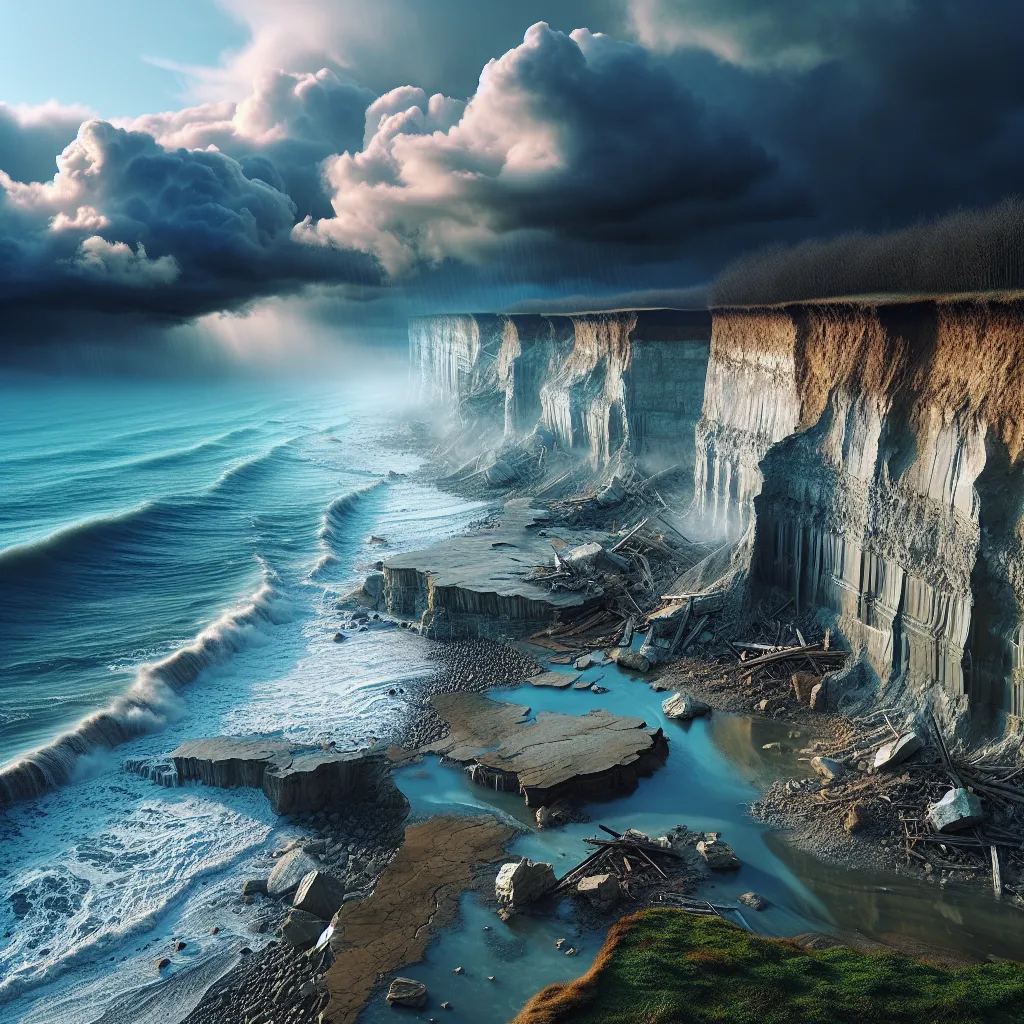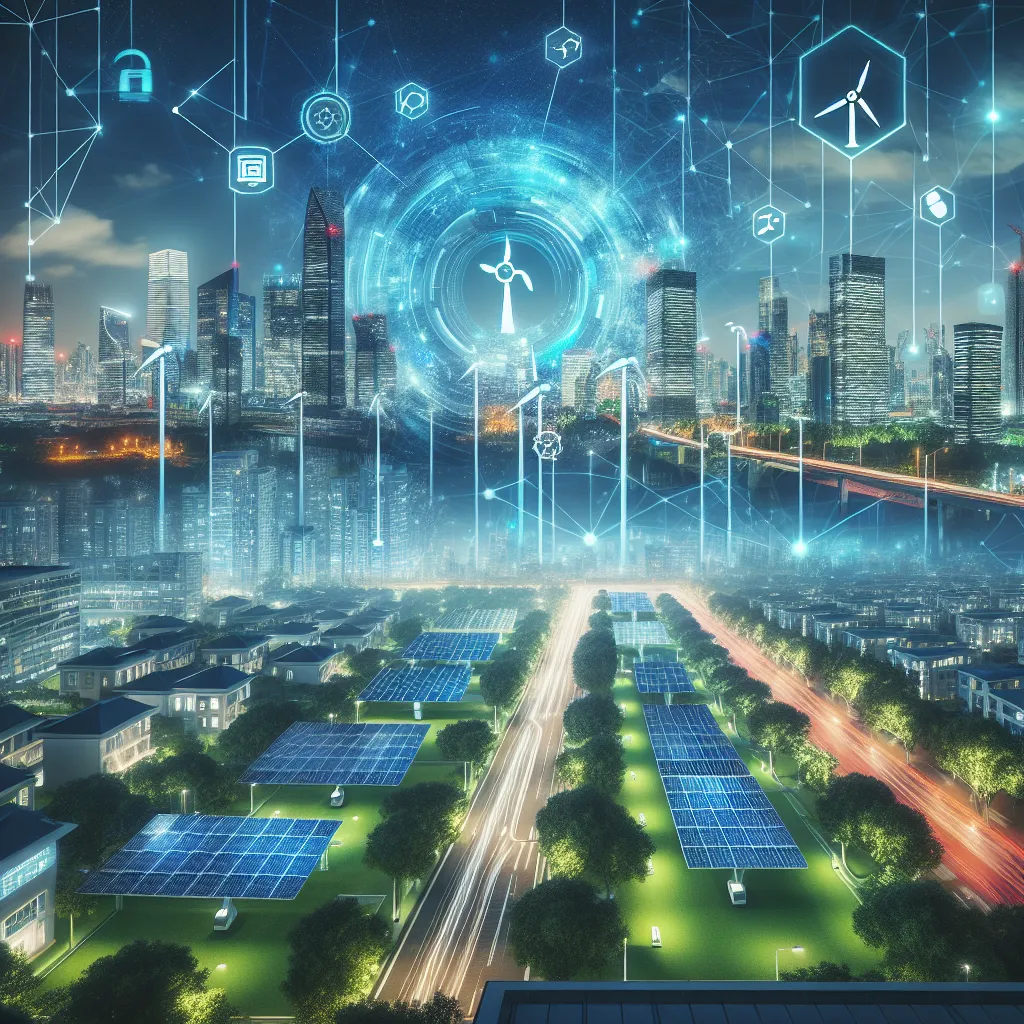Welcome to our IELTS Reading practice session focusing on the critical topic of “The Impact of Climate Change on Coastal Erosion.” As an experienced IELTS instructor, I’ve crafted this comprehensive practice test to help you sharpen your reading skills while exploring this pressing environmental issue. Let’s dive into the passages and questions that mirror the actual IELTS exam format.
 Coastal erosion due to climate change
Coastal erosion due to climate change
Passage 1 (Easy Text)
Coastal Erosion: A Growing Concern
Coastal erosion is a natural process that has shaped our shorelines for millennia. However, in recent decades, this phenomenon has accelerated at an alarming rate, largely due to the impacts of climate change. As global temperatures rise, sea levels are increasing, and extreme weather events are becoming more frequent and intense. These factors combine to exacerbate the erosion of coastlines worldwide, threatening communities, ecosystems, and economies.
One of the most significant contributors to coastal erosion is sea-level rise. As the Earth’s temperature increases, polar ice caps and glaciers melt, adding vast quantities of water to the oceans. This rise in sea level allows waves to reach further inland, eroding beaches and cliffs more rapidly than ever before. Additionally, higher water levels can inundate low-lying areas, permanently altering coastlines and destroying habitats.
Storm surges and extreme weather events also play a crucial role in accelerating coastal erosion. Climate change is intensifying tropical storms and hurricanes, leading to more powerful waves and storm surges that can cause extensive damage to coastal areas in a short period. These events can erode large sections of coastline in just a few hours, causing long-lasting changes to the landscape.
The consequences of increased coastal erosion are far-reaching. Coastal communities face the loss of land, property, and infrastructure, with some areas becoming uninhabitable. Ecosystems such as wetlands and mangroves, which provide essential services like flood protection and carbon sequestration, are under threat. Moreover, the economic impact is substantial, affecting industries such as tourism, fishing, and agriculture that rely on stable coastlines.
To address this growing problem, many countries are implementing coastal management strategies. These include building sea walls and breakwaters, replenishing beaches with sand, and creating natural buffers like restored wetlands. However, these solutions are often expensive and temporary. Long-term strategies must focus on reducing greenhouse gas emissions to slow the pace of climate change and mitigate its impacts on our coasts.
As we face the challenges of coastal erosion in the age of climate change, it is clear that a multifaceted approach is necessary. This includes not only protective measures but also adaptation strategies for coastal communities and global efforts to address the root causes of climate change. Only through collective action can we hope to preserve our coastlines for future generations.
Questions 1-7
Do the following statements agree with the information given in the passage?
Write
TRUE if the statement agrees with the information
FALSE if the statement contradicts the information
NOT GIVEN if there is no information on this
- Coastal erosion is a new phenomenon caused entirely by climate change.
- Rising sea levels contribute significantly to increased coastal erosion.
- Extreme weather events can cause rapid and extensive coastal erosion.
- All coastal areas worldwide are equally affected by erosion.
- Coastal erosion only affects the tourism industry.
- Building sea walls is the most effective long-term solution to coastal erosion.
- Reducing greenhouse gas emissions is crucial for slowing coastal erosion.
Questions 8-13
Complete the sentences below.
Choose NO MORE THAN TWO WORDS from the passage for each answer.
- As global temperatures rise, polar ice caps melt, adding more water to the ___.
- Higher water levels can ___ low-lying areas, permanently changing coastlines.
- Climate change is making tropical storms and hurricanes more ___.
- Coastal erosion threatens ___ such as wetlands and mangroves.
- Many countries are implementing coastal ___ strategies to address erosion.
- A ___ approach is necessary to tackle the challenges of coastal erosion.
Passage 2 (Medium Text)
The Intricate Web of Climate Change and Coastal Dynamics
The relationship between climate change and coastal erosion is a complex interplay of various environmental factors. While the direct impacts of rising sea levels and increased storm intensity are well-documented, the indirect effects of climate change on coastal systems are equally significant and often overlooked. These subtle changes can fundamentally alter the delicate balance of coastal ecosystems and accelerate erosion processes in ways that are not immediately apparent.
One such indirect effect is the change in ocean chemistry due to increased carbon dioxide absorption. As the oceans absorb more CO2, they become more acidic, a process known as ocean acidification. This increased acidity can weaken the calcium carbonate structures of marine organisms, including coral reefs and shellfish. Coral reefs, in particular, play a crucial role in protecting coastlines by dissipating wave energy. As these natural barriers degrade, coastlines become more vulnerable to erosion.
Moreover, changes in ocean currents and circulation patterns, influenced by global warming, can alter sediment transport along coastlines. These currents are responsible for distributing sand and other sediments that replenish beaches and maintain coastal landforms. Disruptions to these patterns can lead to imbalances in sediment distribution, causing some areas to experience increased erosion while others may see accretion, or buildup of sediment.
The thawing of permafrost in Arctic regions presents another less obvious but significant contributor to coastal erosion. As previously frozen ground melts, it releases stored carbon and destabilizes coastlines, making them more susceptible to erosion. This process not only affects local ecosystems but also contributes to a feedback loop that further accelerates global warming.
Changing precipitation patterns due to climate change also play a role in coastal erosion. In some regions, increased rainfall can lead to greater runoff and soil erosion, which in turn affects the stability of coastal cliffs and bluffs. Conversely, in areas experiencing prolonged droughts, the lack of vegetation can make soil more susceptible to erosion when rains do occur.
The impact of climate change on coastal vegetation is another critical factor. Rising temperatures and changing rainfall patterns can alter the distribution and health of coastal plants, including mangroves and salt marshes. These ecosystems act as natural buffers against erosion, and their degradation can significantly reduce coastline resilience.
Human responses to climate change and coastal erosion can inadvertently exacerbate the problem. For instance, the construction of hard structures like sea walls, while providing immediate protection, can disrupt natural sediment transport processes and lead to increased erosion in adjacent areas. This phenomenon, known as the “coastal squeeze,” occurs when natural habitats are trapped between rising sea levels and fixed coastal defenses, leading to their gradual disappearance.
Understanding these complex interactions is crucial for developing effective strategies to combat coastal erosion in the face of climate change. It requires a holistic approach that considers not only the immediate and visible impacts but also the long-term and indirect effects of our changing climate on coastal systems.
Questions 14-19
Choose the correct letter, A, B, C, or D.
-
According to the passage, which of the following is an indirect effect of climate change on coastal erosion?
A) Rising sea levels
B) Increased storm intensity
C) Ocean acidification
D) Higher global temperatures -
What role do coral reefs play in coastal protection?
A) They absorb carbon dioxide
B) They dissipate wave energy
C) They increase sediment distribution
D) They stabilize ocean currents -
How does the thawing of permafrost contribute to coastal erosion?
A) By releasing stored carbon
B) By altering ocean currents
C) By increasing ocean acidity
D) By changing precipitation patterns -
What is the “coastal squeeze” phenomenon?
A) The compression of beaches due to rising sea levels
B) The loss of natural habitats between rising seas and coastal defenses
C) The increased pressure on coastal communities to relocate
D) The narrowing of coastal currents due to erosion -
Which of the following is NOT mentioned as a factor influencing coastal erosion?
A) Changes in ocean currents
B) Alterations in coastal vegetation
C) Shifts in marine animal migration
D) Variations in precipitation patterns -
What does the passage suggest about human responses to coastal erosion?
A) They are always effective in the long term
B) They can sometimes worsen the problem
C) They are unnecessary in most cases
D) They should focus solely on hard structures like sea walls
Questions 20-26
Complete the summary below.
Choose NO MORE THAN TWO WORDS from the passage for each answer.
Climate change affects coastal erosion through various mechanisms. Increased ocean acidity weakens the 20 structures of marine organisms, including coral reefs that protect coastlines. Changes in ocean currents can disrupt 21, leading to uneven erosion and accretion along coasts. In Arctic regions, melting 22 contributes to erosion and releases stored carbon. Altered 23 patterns affect soil stability and vegetation. The health of coastal plants like mangroves, which act as natural 24 against erosion, is also impacted. Human interventions, such as building sea walls, can cause the 25 effect, trapping habitats between rising seas and fixed defenses. Addressing these issues requires a 26___ approach that considers all aspects of climate change’s impact on coastal systems.
Passage 3 (Hard Text)
Quantifying and Modeling the Impact of Climate Change on Coastal Erosion
The quantification and modeling of climate change’s impact on coastal erosion present significant challenges to researchers and policymakers alike. The multifaceted nature of the problem, involving complex interactions between atmospheric, oceanic, and terrestrial processes, requires sophisticated analytical approaches and cutting-edge technological tools. As our understanding of these dynamics evolves, so too do the methodologies employed to predict and mitigate the effects of climate-induced coastal erosion.
One of the primary challenges in quantifying coastal erosion lies in the variability of temporal and spatial scales involved. Erosion processes can occur over timeframes ranging from hours (during extreme storm events) to centuries (in the case of long-term sea-level rise). Similarly, spatial scales can vary from localized impacts on individual beaches to regional changes affecting entire coastlines. This variability necessitates the use of multi-scale modeling approaches that can integrate data from diverse sources and across different resolutions.
Advanced remote sensing technologies have revolutionized our ability to monitor and quantify coastal erosion. Satellite imagery, LiDAR (Light Detection and Ranging), and UAV (Unmanned Aerial Vehicle) surveys provide high-resolution data on coastline changes over time. These technologies allow for the creation of detailed Digital Elevation Models (DEMs) and enable the detection of subtle changes in coastal morphology that may be indicative of erosion processes.
The integration of this observational data with numerical models forms the backbone of modern coastal erosion prediction systems. These models typically incorporate a range of parameters, including wave dynamics, sediment transport, sea-level rise projections, and local geology. Coupled ocean-atmosphere models are increasingly being used to simulate the complex interactions between climate change and coastal processes, allowing for more accurate long-term predictions of erosion patterns.
One significant advancement in this field is the development of probabilistic models that account for the inherent uncertainties in climate projections and coastal response. These models use ensemble approaches, running multiple simulations with varying initial conditions and parameters to generate a range of possible outcomes. This probabilistic approach provides decision-makers with a more nuanced understanding of potential risks and allows for the development of adaptive management strategies.
The incorporation of socio-economic factors into coastal erosion models represents another frontier in this field. Recognizing that human activities and land-use changes can significantly influence erosion processes, researchers are developing integrated assessment models that combine physical processes with socio-economic scenarios. These models can help predict not only the physical changes to coastlines but also the potential impacts on communities and economies.
Machine learning and artificial intelligence techniques are increasingly being applied to coastal erosion modeling. These approaches can identify complex patterns in large datasets that may not be apparent through traditional analytical methods. For example, neural networks have been used to improve the accuracy of shoreline change predictions by learning from historical data and incorporating a wide range of environmental variables.
Despite these advancements, significant challenges remain in accurately quantifying and modeling the impact of climate change on coastal erosion. The non-linear nature of many coastal processes, coupled with the uncertainties inherent in long-term climate projections, means that predictions often come with a high degree of uncertainty. Moreover, the localized nature of many erosion processes makes it difficult to develop generalized models that can be applied across different coastal environments.
To address these challenges, there is a growing emphasis on interdisciplinary approaches that bring together experts from fields such as climatology, oceanography, geology, ecology, and social sciences. This collaborative approach allows for a more comprehensive understanding of the complex interactions between climate change and coastal systems.
As we move forward, the development of more sophisticated modeling techniques, coupled with improved data collection and analysis methods, will be crucial in our efforts to predict and mitigate the impacts of climate change on coastal erosion. These tools will be essential for informing policy decisions, guiding coastal management strategies, and helping communities adapt to the changing coastlines of the future.
Questions 27-31
Choose the correct letter, A, B, C, or D.
-
What is identified as a primary challenge in quantifying coastal erosion?
A) Lack of advanced technologies
B) Insufficient funding for research
C) Variability in temporal and spatial scales
D) Limited access to coastal areas -
Which technology is NOT mentioned as a tool for monitoring coastal erosion?
A) Satellite imagery
B) LiDAR
C) UAV surveys
D) Sonar mapping -
What advantage do probabilistic models offer in coastal erosion prediction?
A) They eliminate all uncertainties in projections
B) They provide a range of possible outcomes
C) They focus solely on worst-case scenarios
D) They are simpler to implement than other models -
How are machine learning and AI techniques being applied in this field?
A) To replace traditional analytical methods entirely
B) To identify complex patterns in large datasets
C) To automate the entire modeling process
D) To reduce the need for human researchers -
What does the passage suggest about the current state of coastal erosion modeling?
A) It has reached its peak in terms of accuracy and reliability
B) It faces ongoing challenges despite significant advancements
C) It is no longer a priority in climate change research
D) It has solved all major issues related to prediction
Questions 32-36
Complete the sentences below.
Choose NO MORE THAN THREE WORDS from the passage for each answer.
- The integration of observational data with ___ forms the basis of modern coastal erosion prediction systems.
- ___ are used to simulate the interactions between climate change and coastal processes for long-term predictions.
- Researchers are developing ___ that combine physical processes with socio-economic scenarios.
- The ___ of many coastal processes contributes to the difficulty in making accurate long-term predictions.
- There is an increasing focus on ___ approaches that bring together experts from various fields to study coastal erosion.
Questions 37-40
Do the following statements agree with the claims of the writer in the passage?
Write
YES if the statement agrees with the claims of the writer
NO if the statement contradicts the claims of the writer
NOT GIVEN if it is impossible to say what the writer thinks about this
- Remote sensing technologies have completely solved the problem of monitoring coastal erosion.
- Probabilistic models provide a more nuanced understanding of potential erosion risks compared to deterministic models.
- The incorporation of socio-economic factors into erosion models is unnecessary for accurate predictions.
- Interdisciplinary collaboration is essential for a comprehensive understanding of climate change’s impact on coastal erosion.
Answer Key
Passage 1
- FALSE
- TRUE
- TRUE
- NOT GIVEN
- FALSE
- FALSE
- TRUE
- oceans
- inundate
- powerful
- ecosystems
- management
- multifaceted
Passage 2
- C
- B
- A
- B
- C
- B
- calcium carbonate
- sediment transport
- permafrost
- precipitation
- buffers
- coastal squeeze
- holistic
Passage 3
- C
- D
- B
- B
- B
- numerical models
- Coupled ocean-atmosphere models
- integrated assessment models
- non-linear nature
- interdisciplinary
- NO
- YES
- NO
- YES
This comprehensive IELTS Reading practice test on “The Impact of Climate Change on Coastal Erosion” covers various aspects of this critical environmental issue. The passages progress from easier to more challenging texts, mirroring the structure of the actual IELTS exam. By practicing with these materials, you’ll enhance your reading skills while gaining valuable knowledge about coastal erosion and climate change.
Remember to pay attention to the different question types and strategies for each. Time management is crucial in the IELTS Reading test, so practice answering these questions within the allocated time frame.


